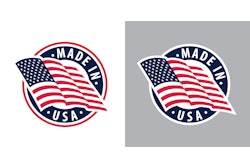
Global supply chain activity fell in July as U.S. manufacturers sharply tapered purchases of materials and components after building inventories in June ahead of the end of the “tariff pause,” according to the GEP Global Supply Chain Volatility Index.
“When we remove companies’ front-loading inventories and rerouting goods to avoid tariffs, the underlying picture points to slowing manufacturing demand worldwide,” says John Piatek, VP, consulting, GEP. “The July data shows a clear pullback in orders, with U.S. manufacturers preparing for lower demand going forward.”
Key takeaways:
· The index dropped to -0.35 from -0.17 in June, signaling increased spare capacity worldwide. The United States was the main driver, with North America’s index falling to -0.33 from -0.06. The reversal follows a surge in June when U.S. factories front-loaded orders to beat anticipated tariff changes. In July, U.S. manufacturers sharply tapered purchases of inputs — materials, components and commodities — signaling expectations of slowing demand going forward.
· Asian factory purchasing activity remains slightly below trend due to growing weakness in Japan and South Korea. Data was mostly collected prior to these two countries striking double-digit tariff agreements with the United States. Taiwanese factories also saw an accelerated downturn, weighing on the broader region. Notably, after declining in the two previous months, China’s factory buying volumes rose in July.
· Europe industrial recovery slipped: Its index dropped to -0.30 from 0.01. Germany’s rebound slowed, highlighting the fragile nature of the continent’s industrial recovery.
· In the UK, the index declined to -0.58, from -0.41, signaling that the U.K.’s supply chains continue to experience an elevated level of spare capacity.
· Safety stockpiling eased, indicating limited concern over supply bottlenecks or price surges.
· Staffing capacity and transportation costs were stable, with no signs of inflationary pressure from these sources.


















